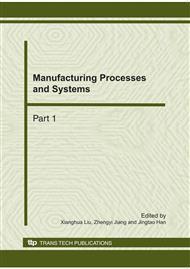p.359
p.363
p.368
p.372
p.377
p.385
p.389
p.395
p.399
Airport Gate Assignment Model Based on Gate Occupied Efficiency
Abstract:
Airport gate assignment is to appoint a gate for arrival or leave flight and to ensure that the flight is on schedule. Assigning the airport gate with high efficiency is a key task among the airport ground operation. As the core of airport operation, aircraft stands assignment is known as a kind of complicated combinatorial optimization problem. In this paper, occupied gates in order to optimize the efficiency of the target index, the purpose of parking gates in order to save the resource utilization and to improve the speed of flight at the same time working to meet the requirements of the quality of passenger services, An integer program (IP) model is developed, and a tabu search algorithm was put forward to resolve the model. The algorithm results in the calculation of time and extent to optimize the effectiveness of certain.
Info:
Periodical:
Pages:
377-384
Citation:
Online since:
October 2010
Price:
Сopyright:
© 2011 Trans Tech Publications Ltd. All Rights Reserved
Share:
Citation:


